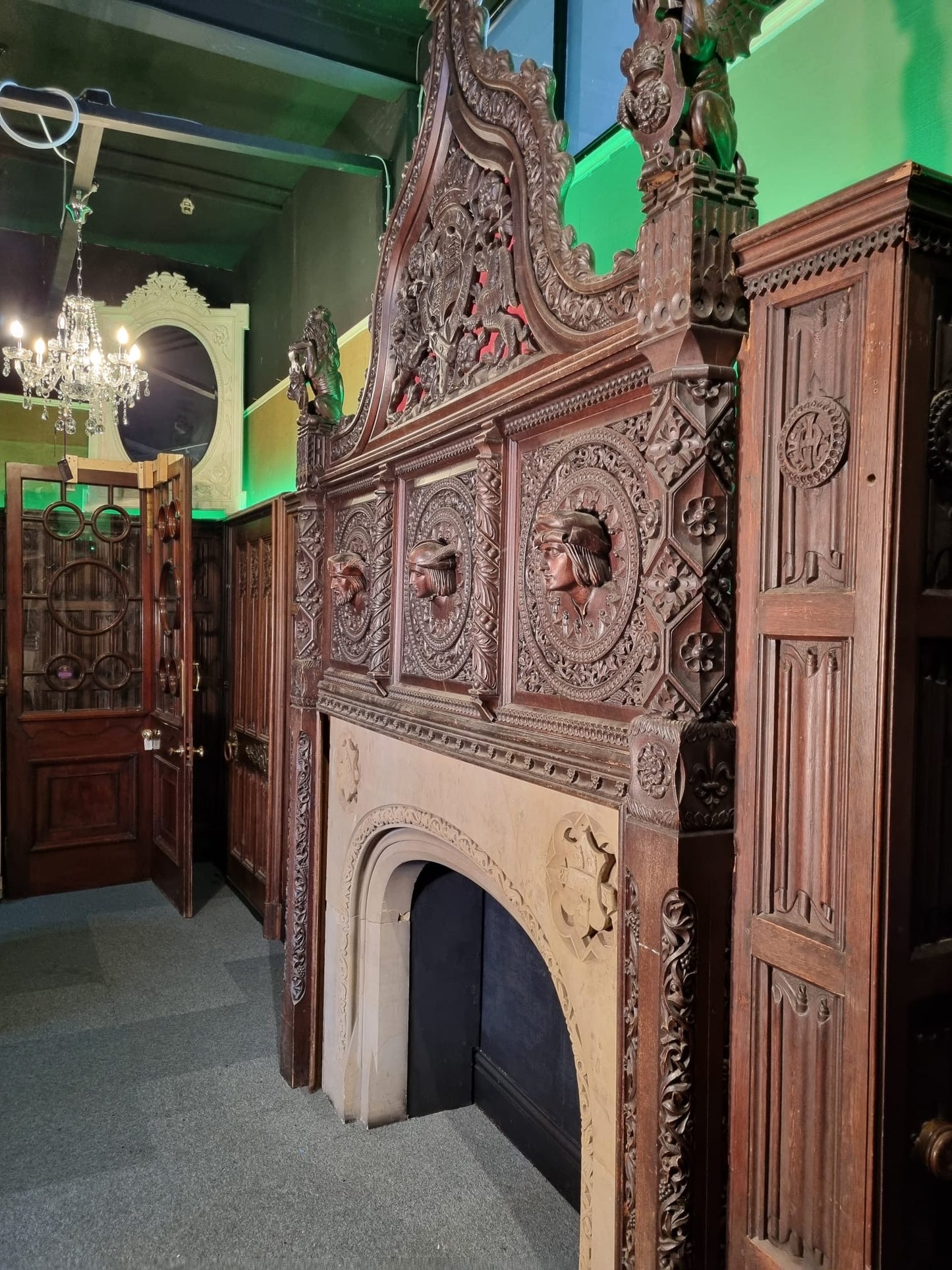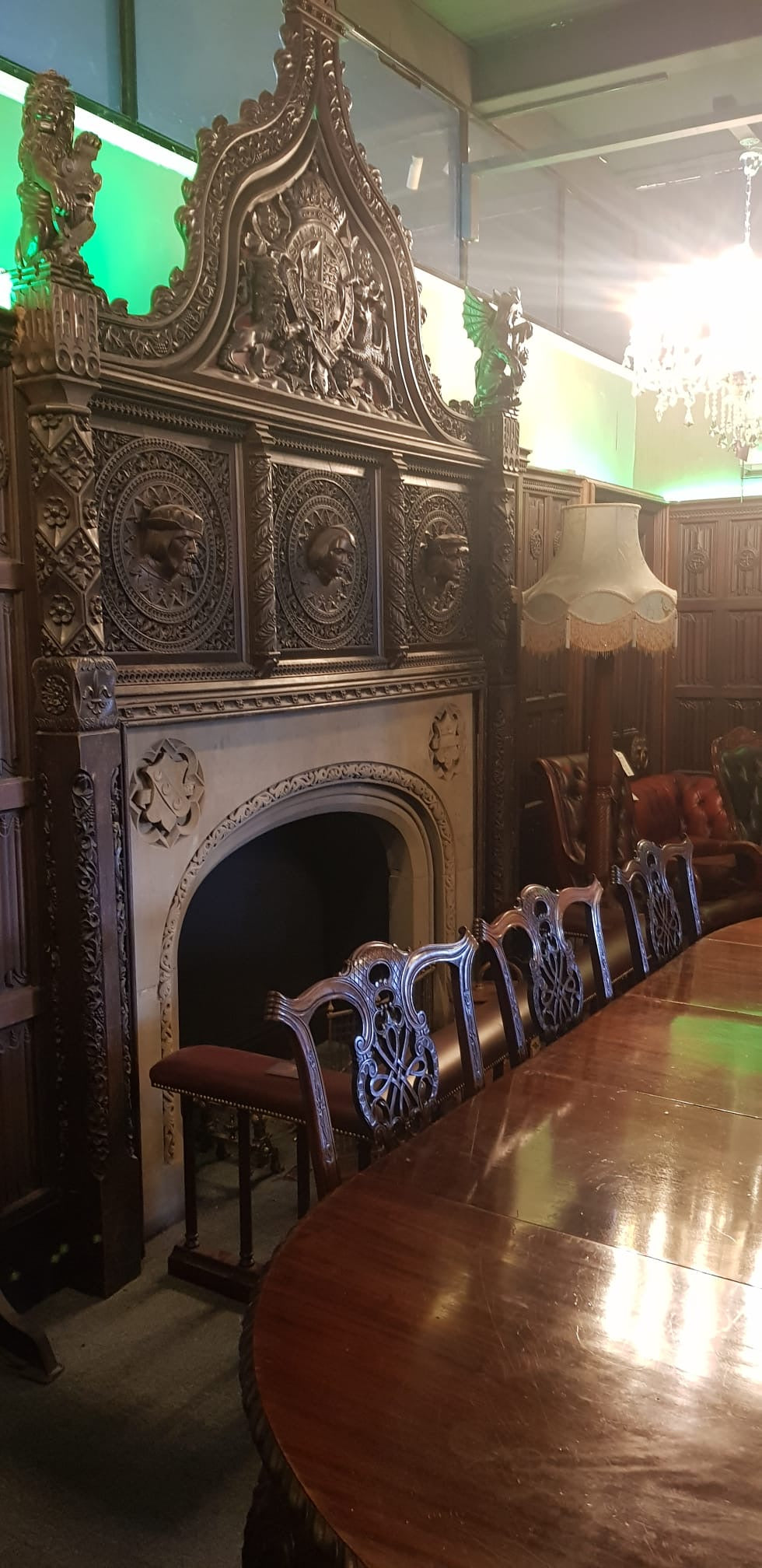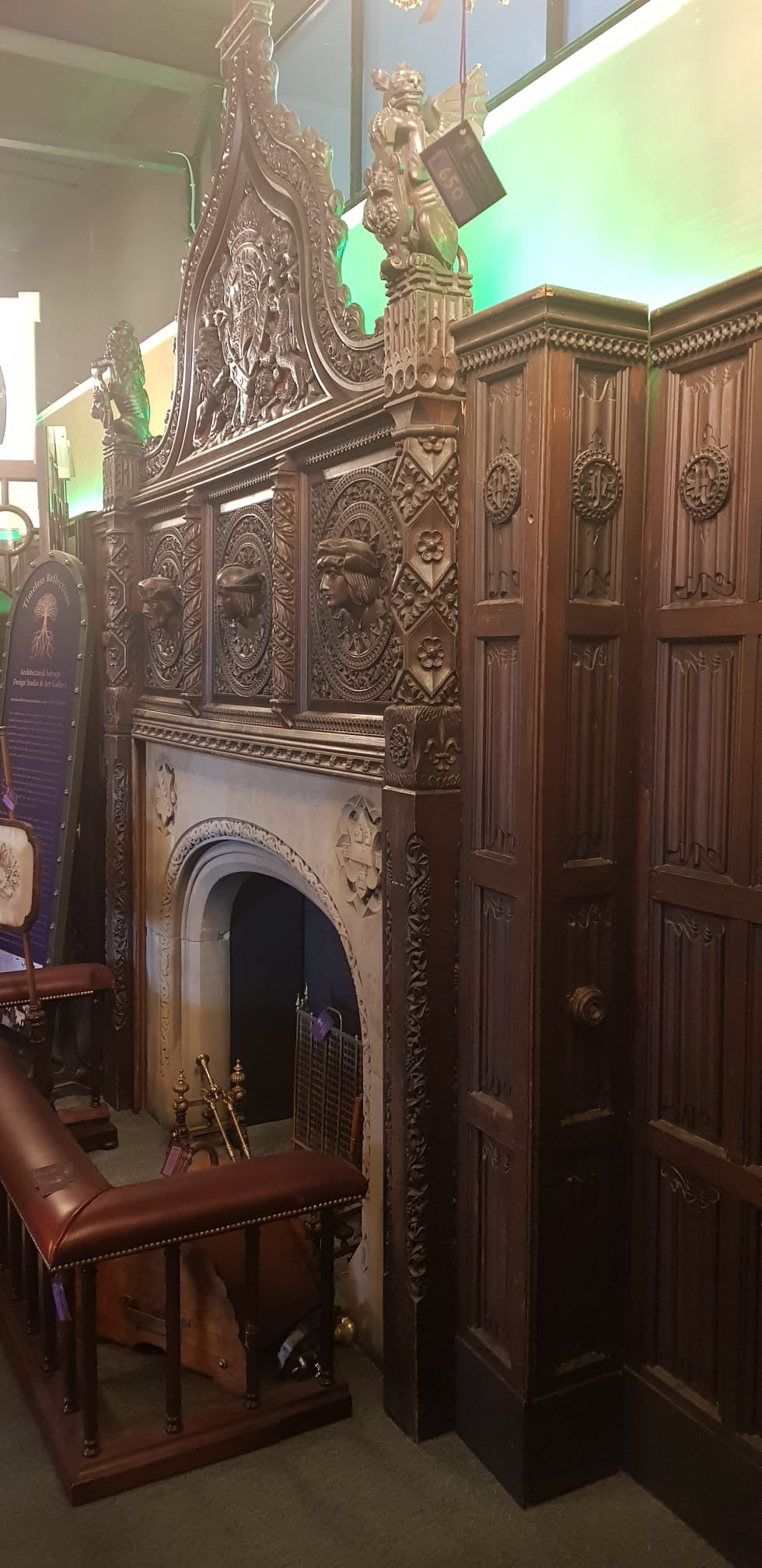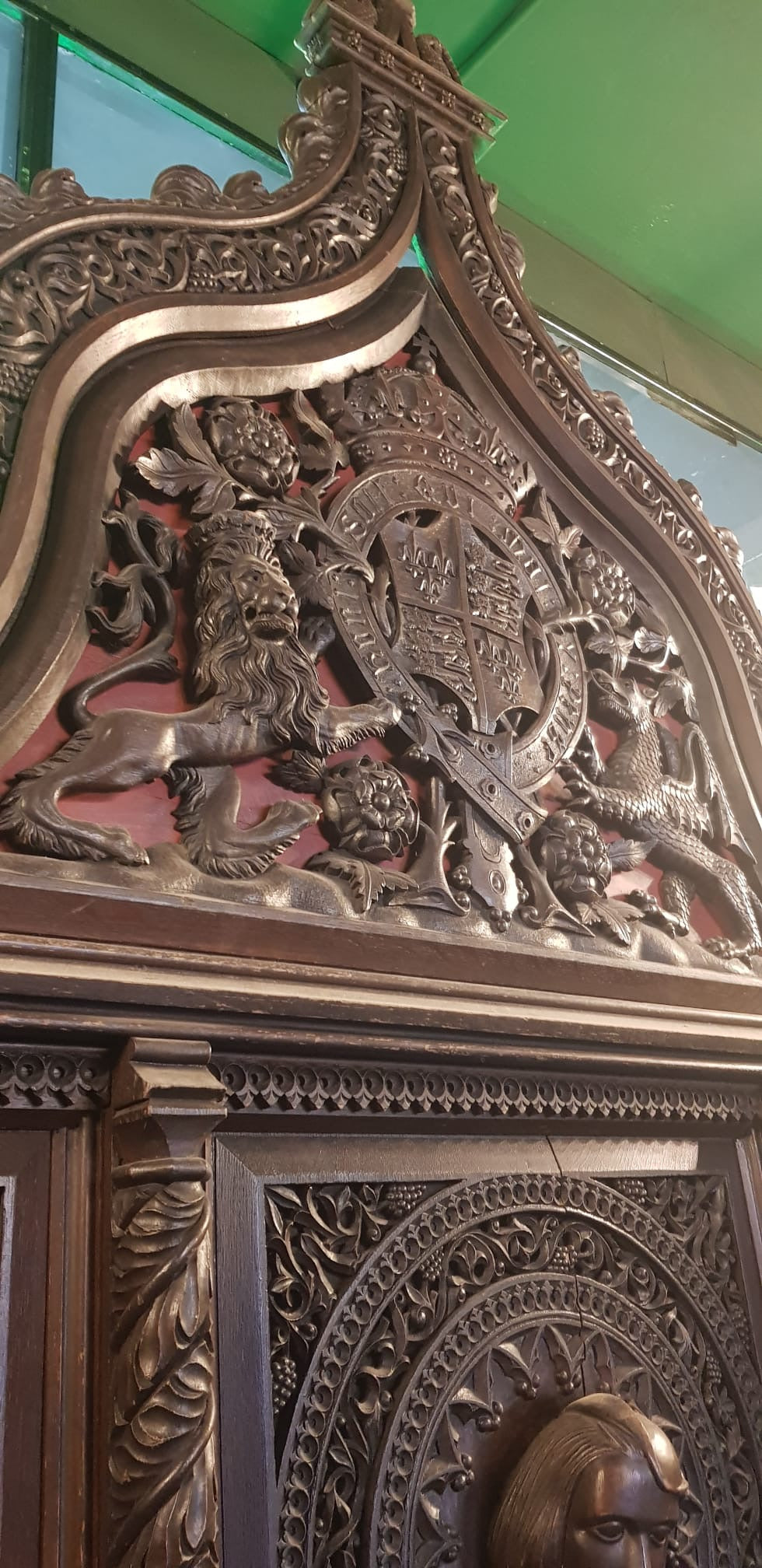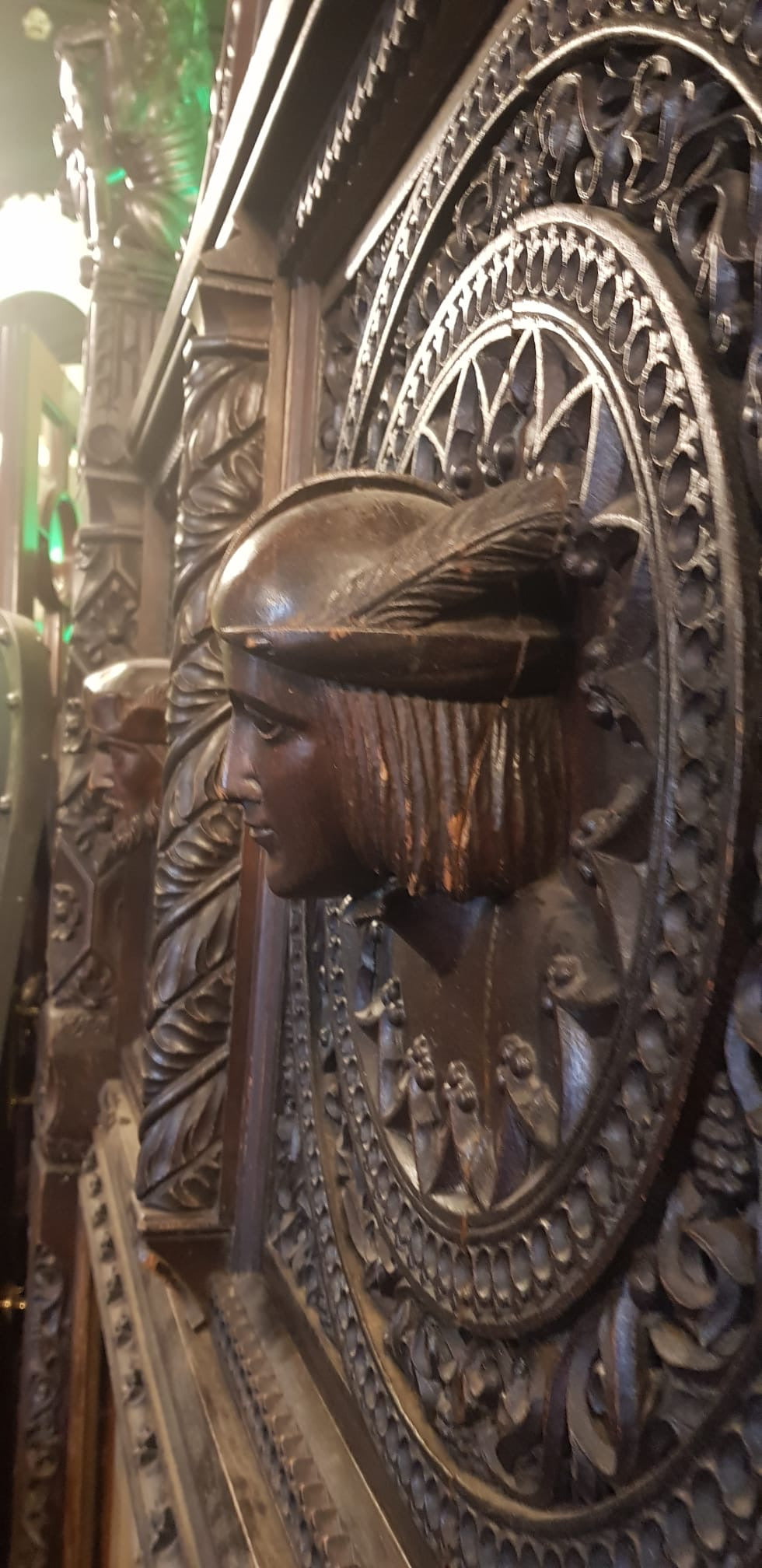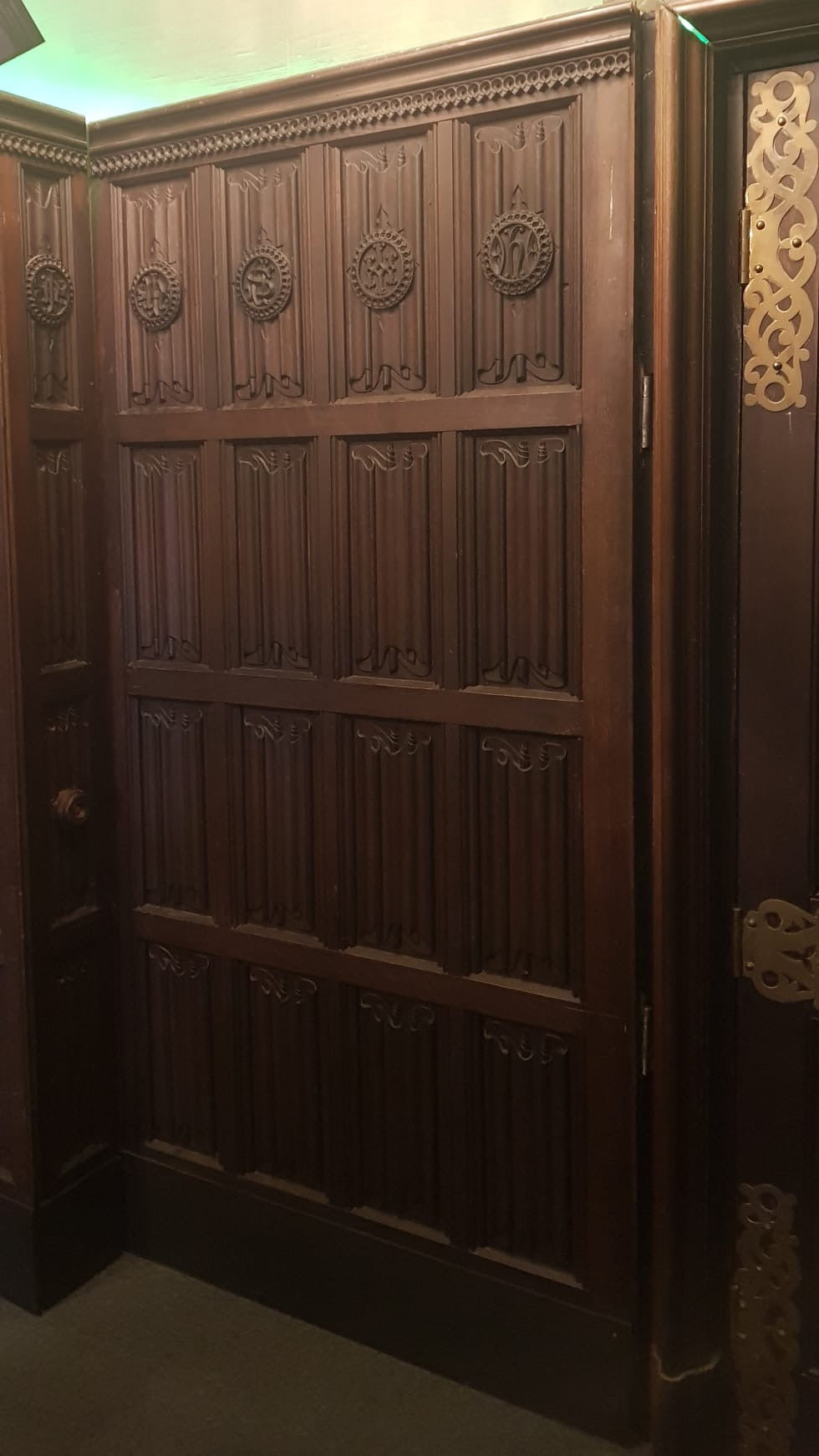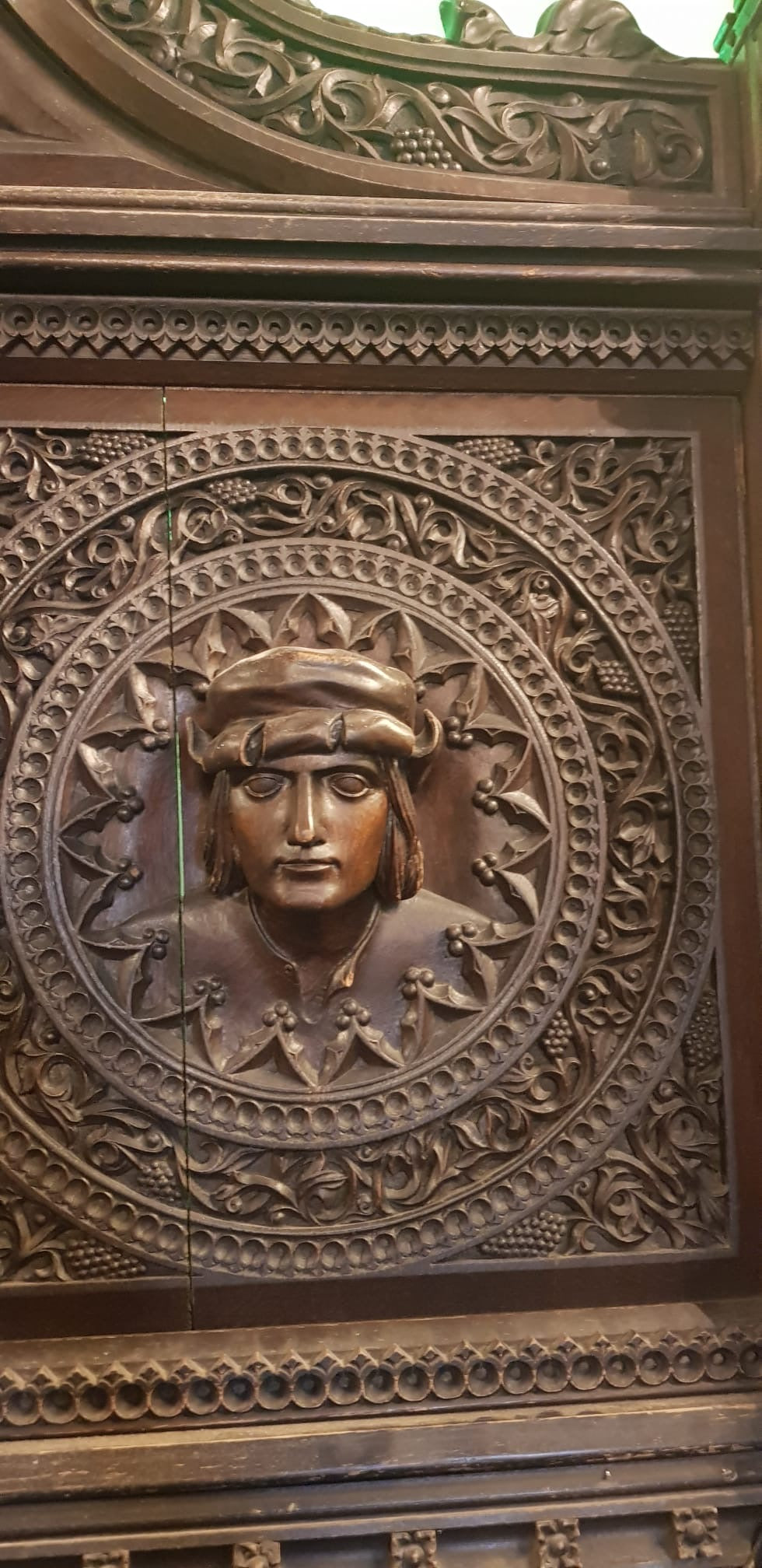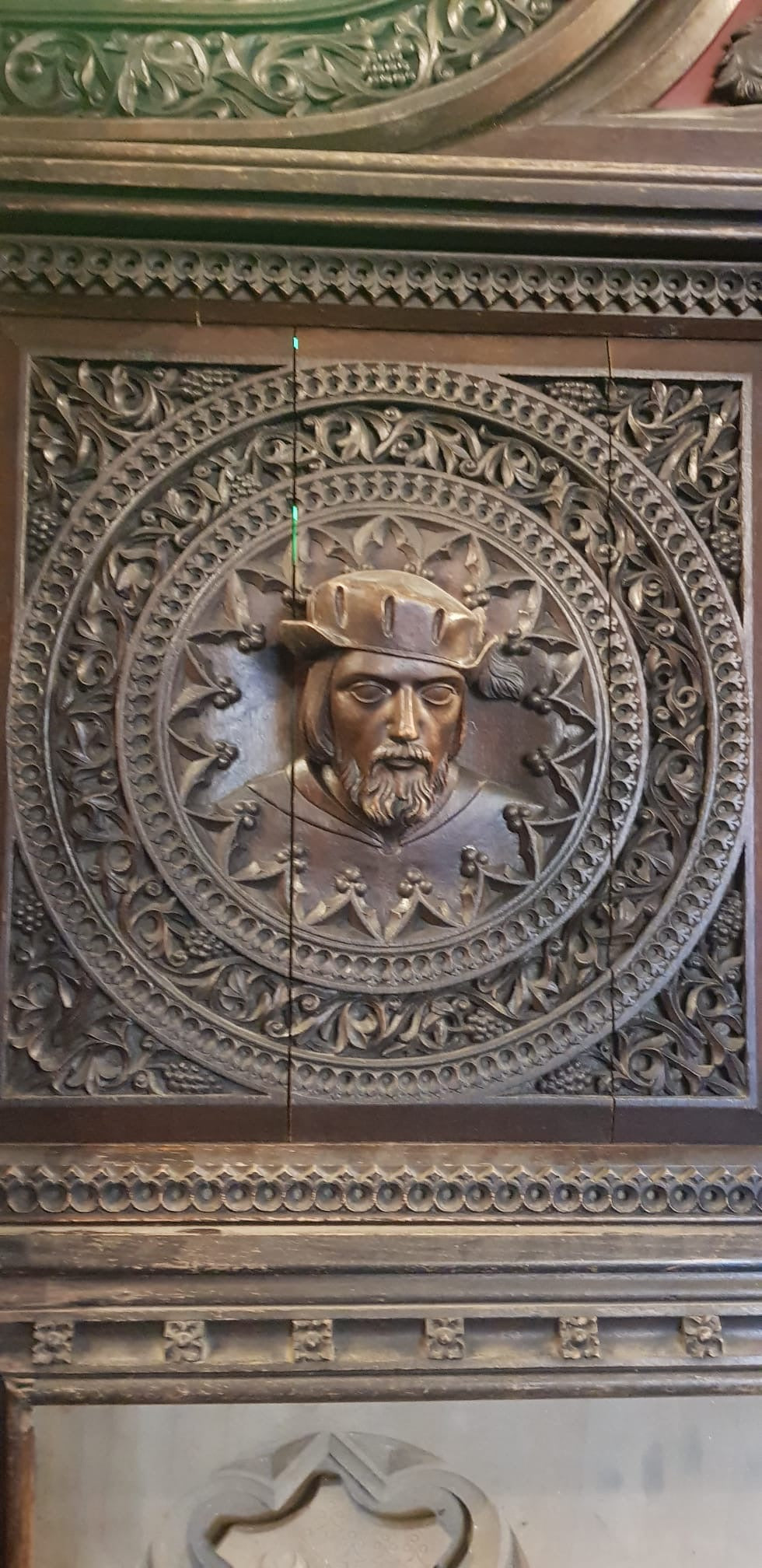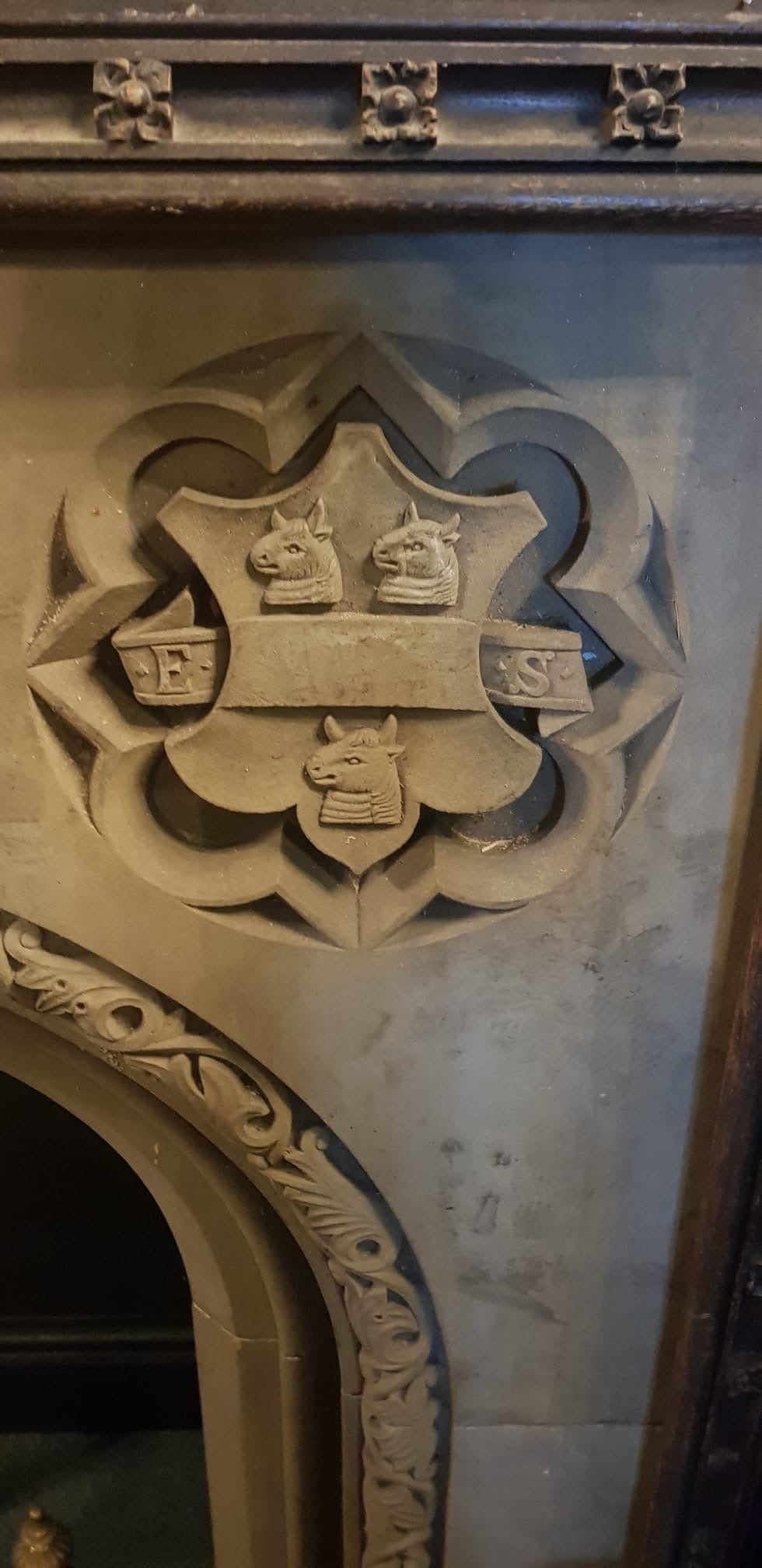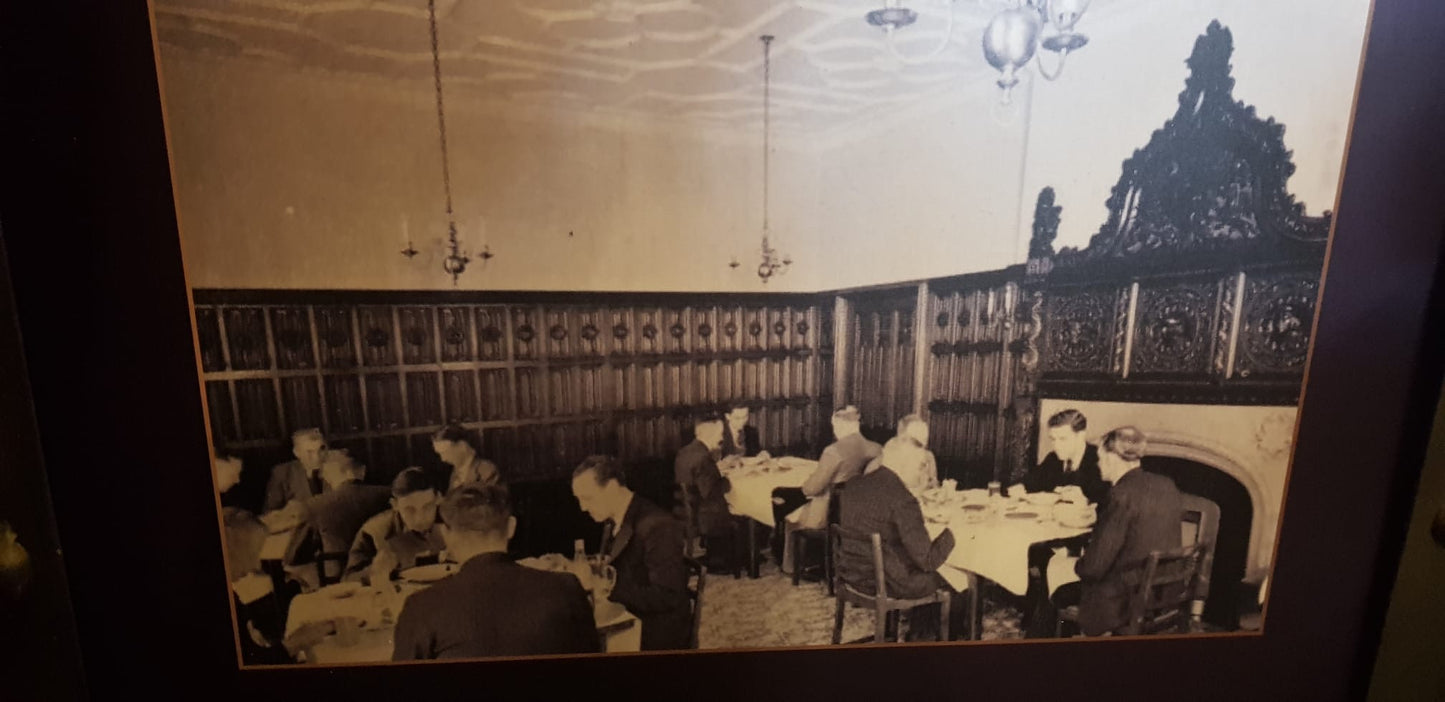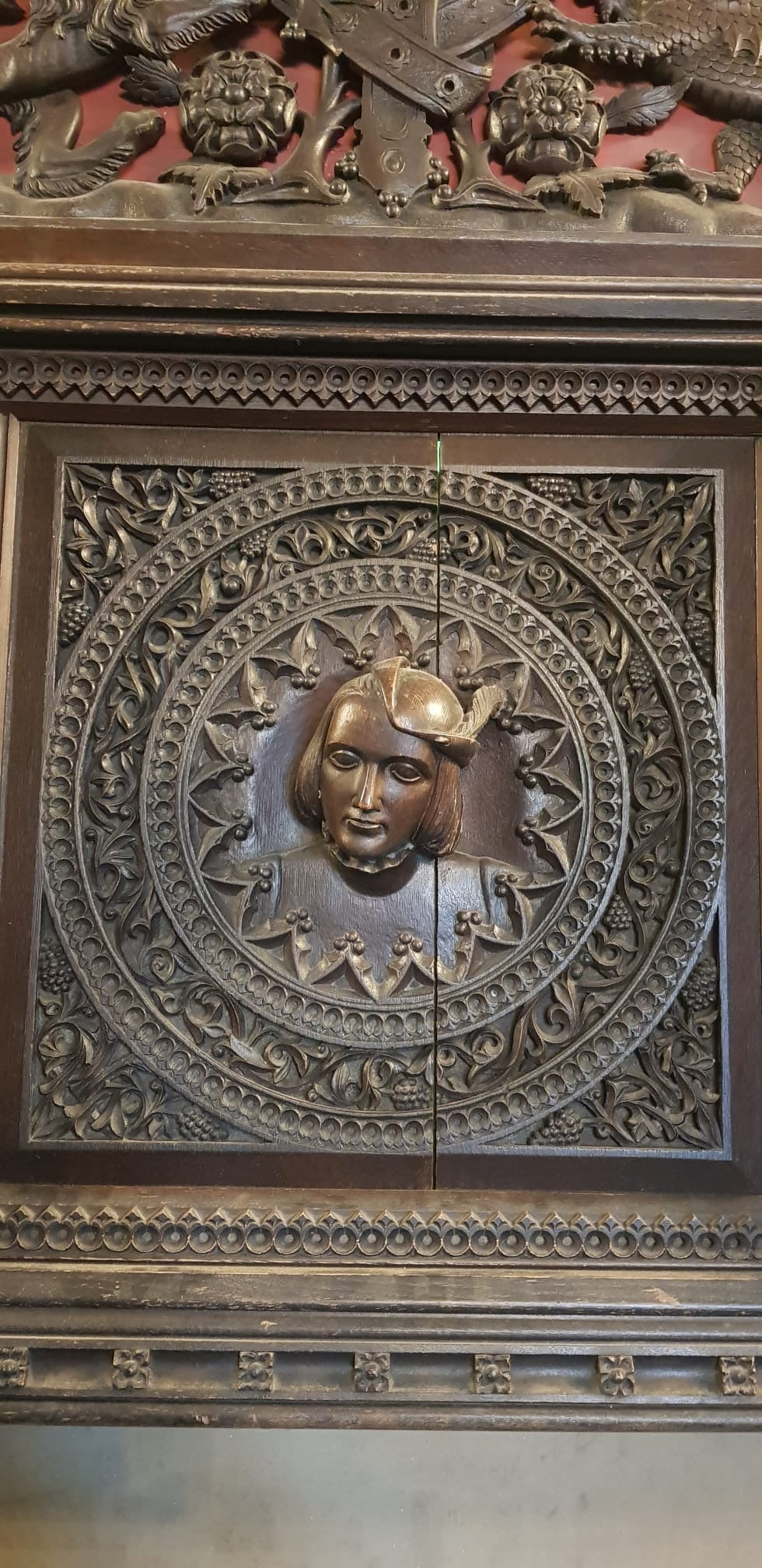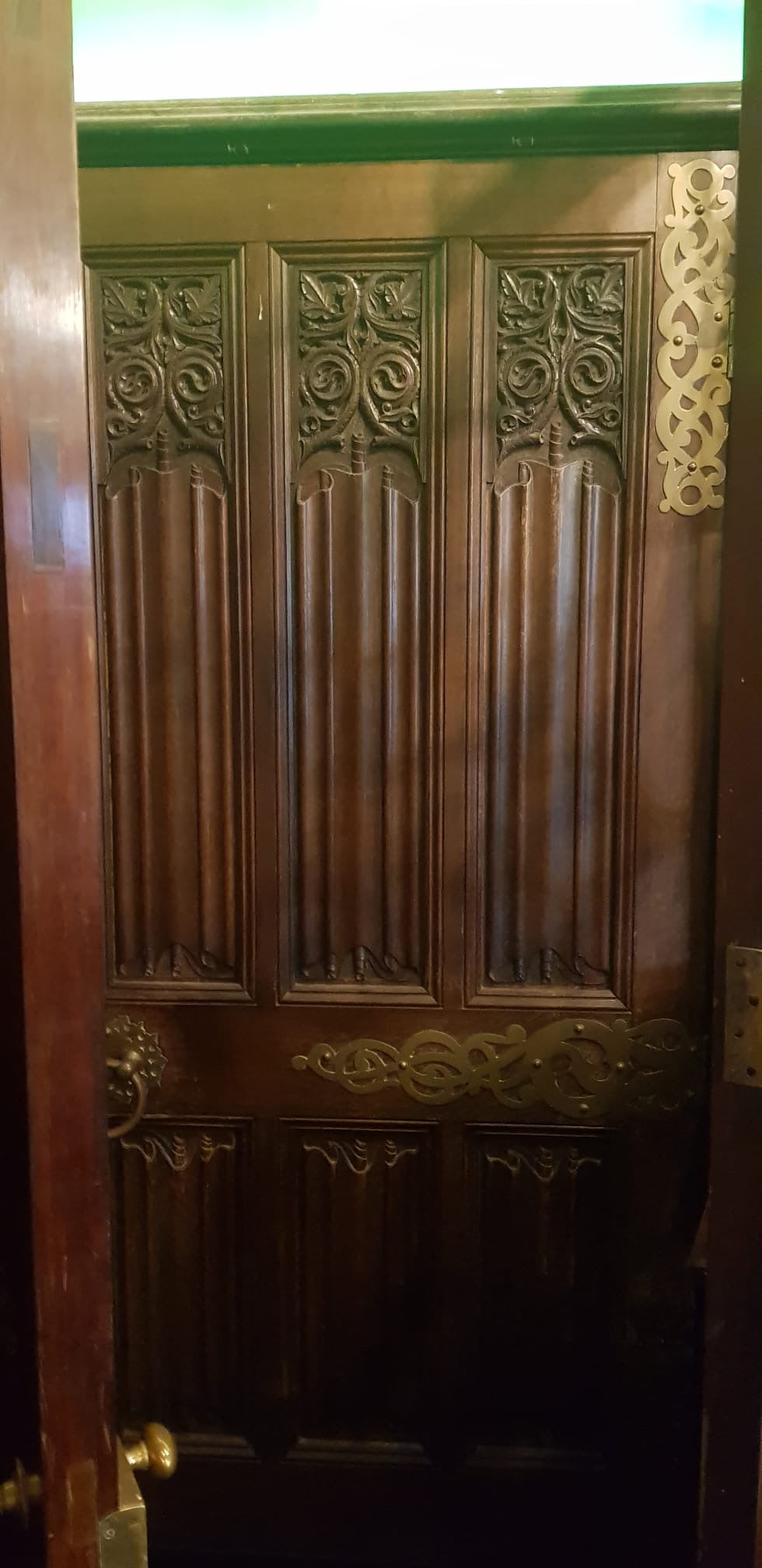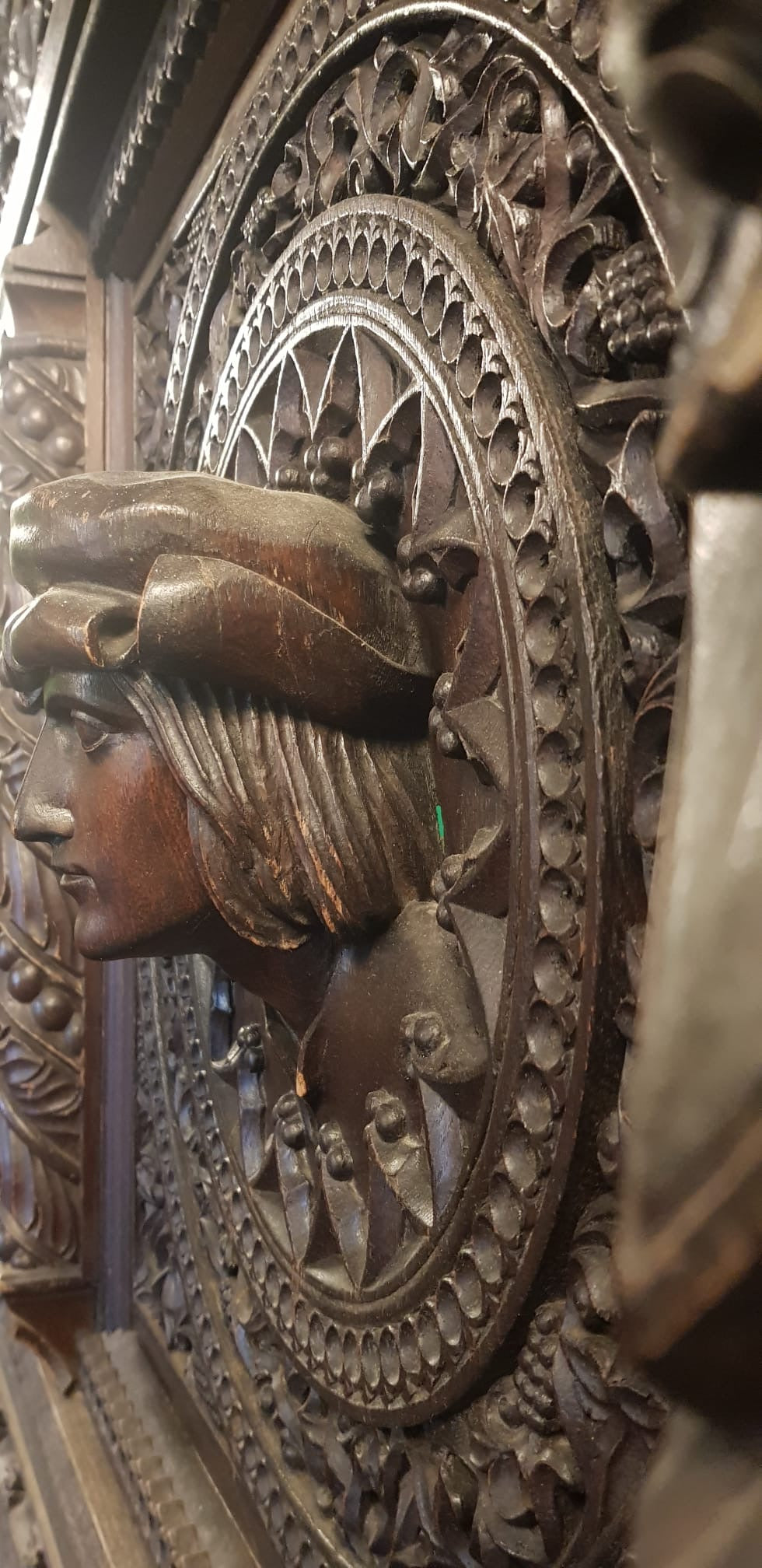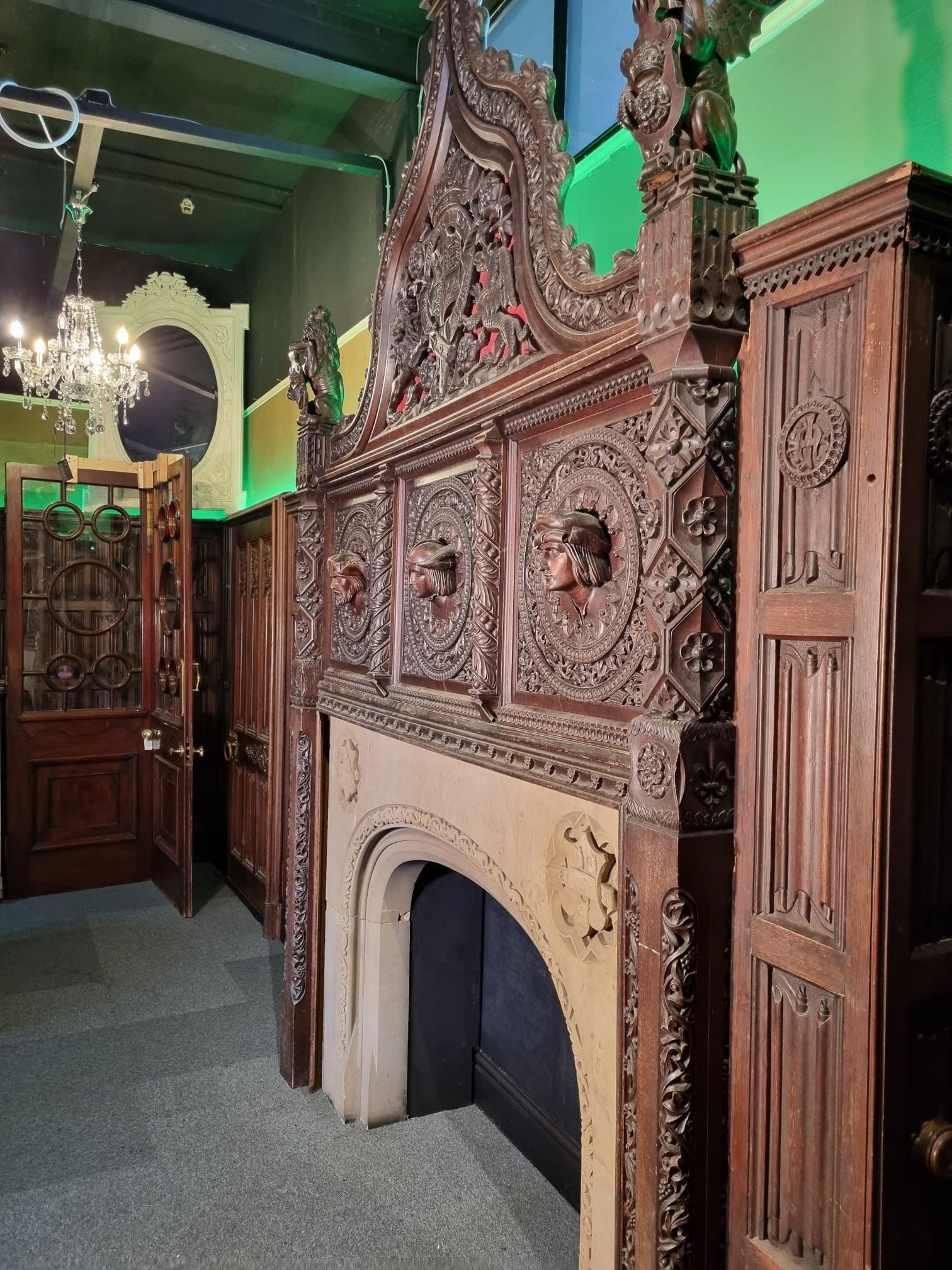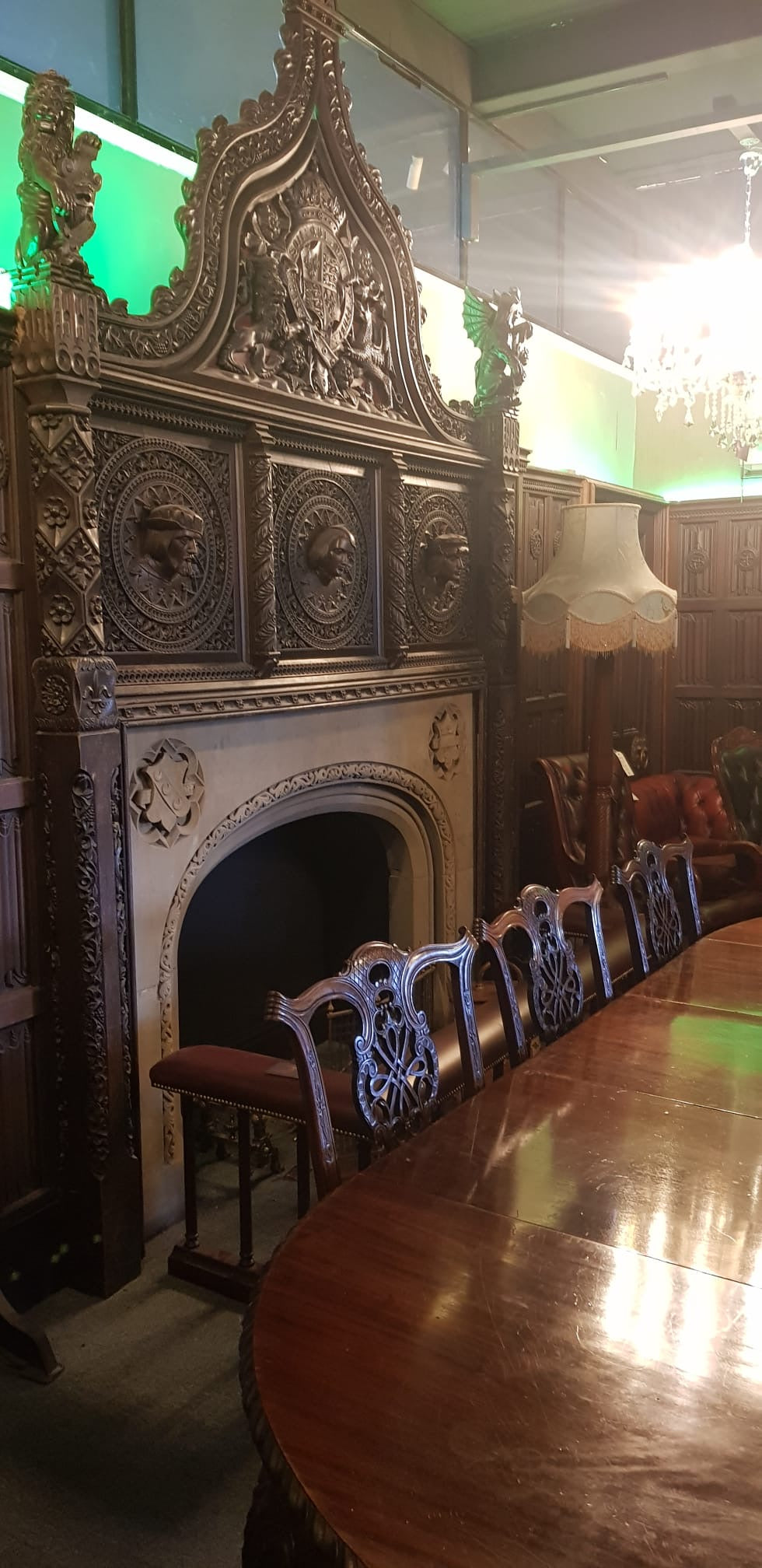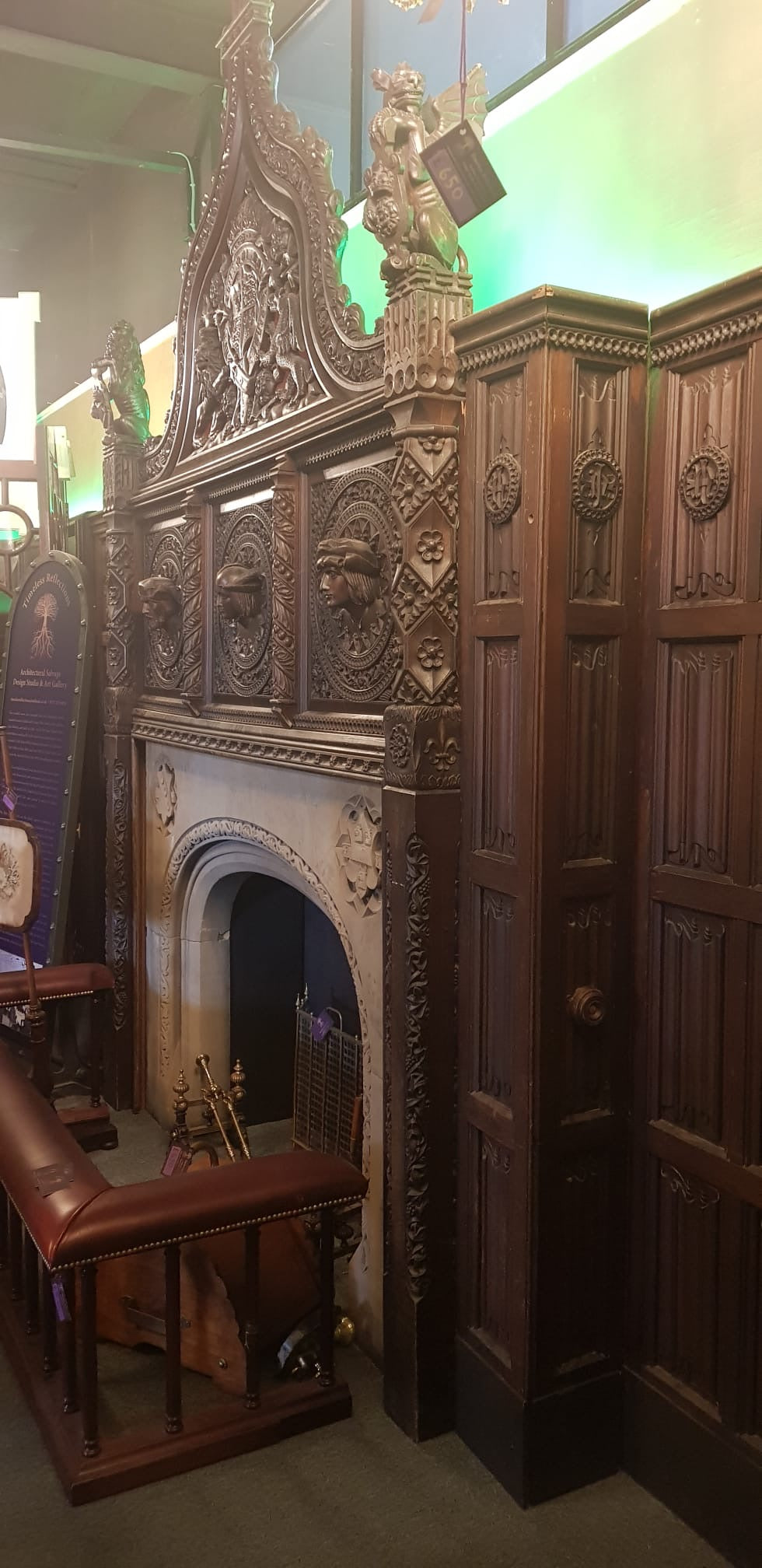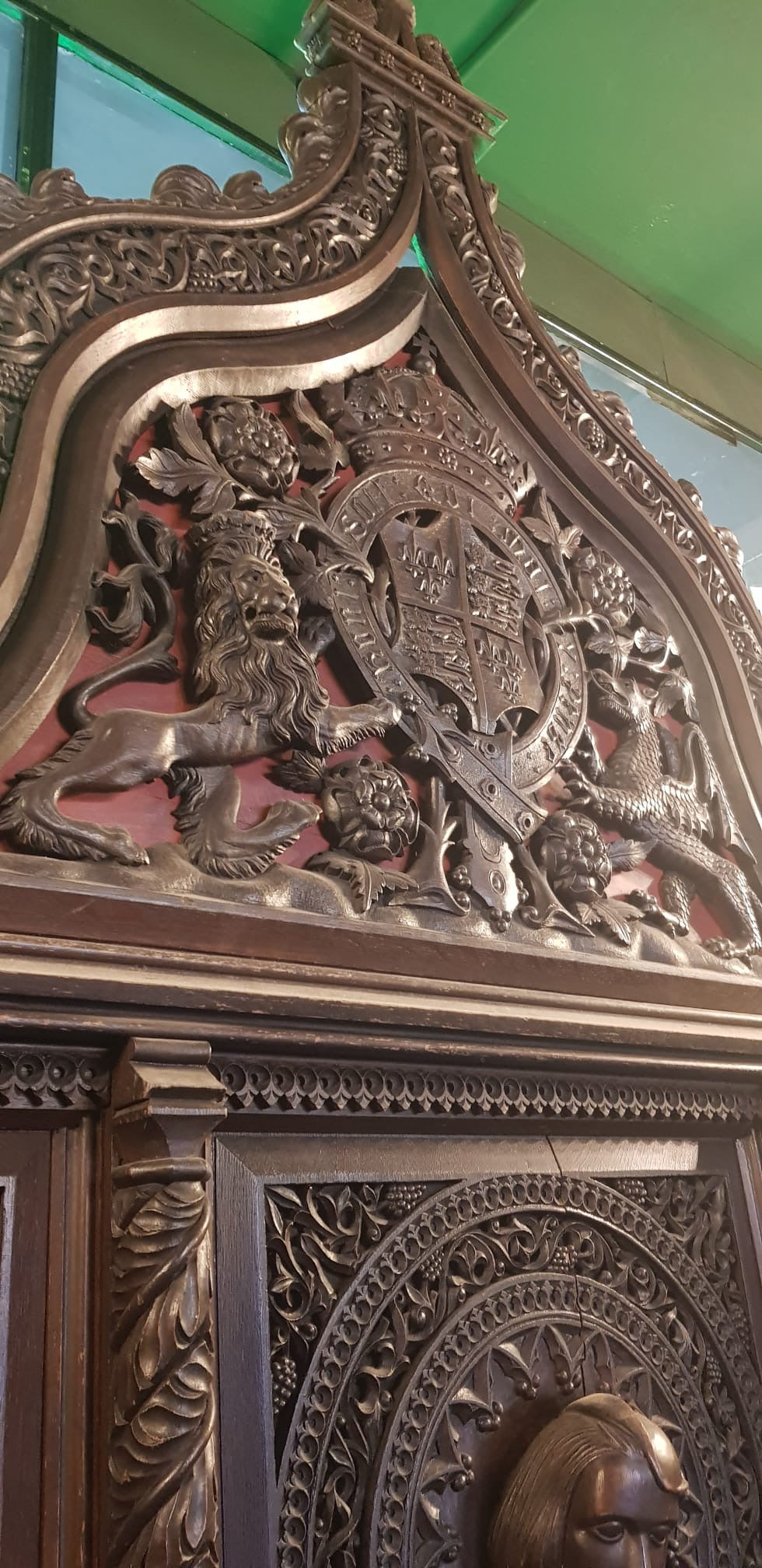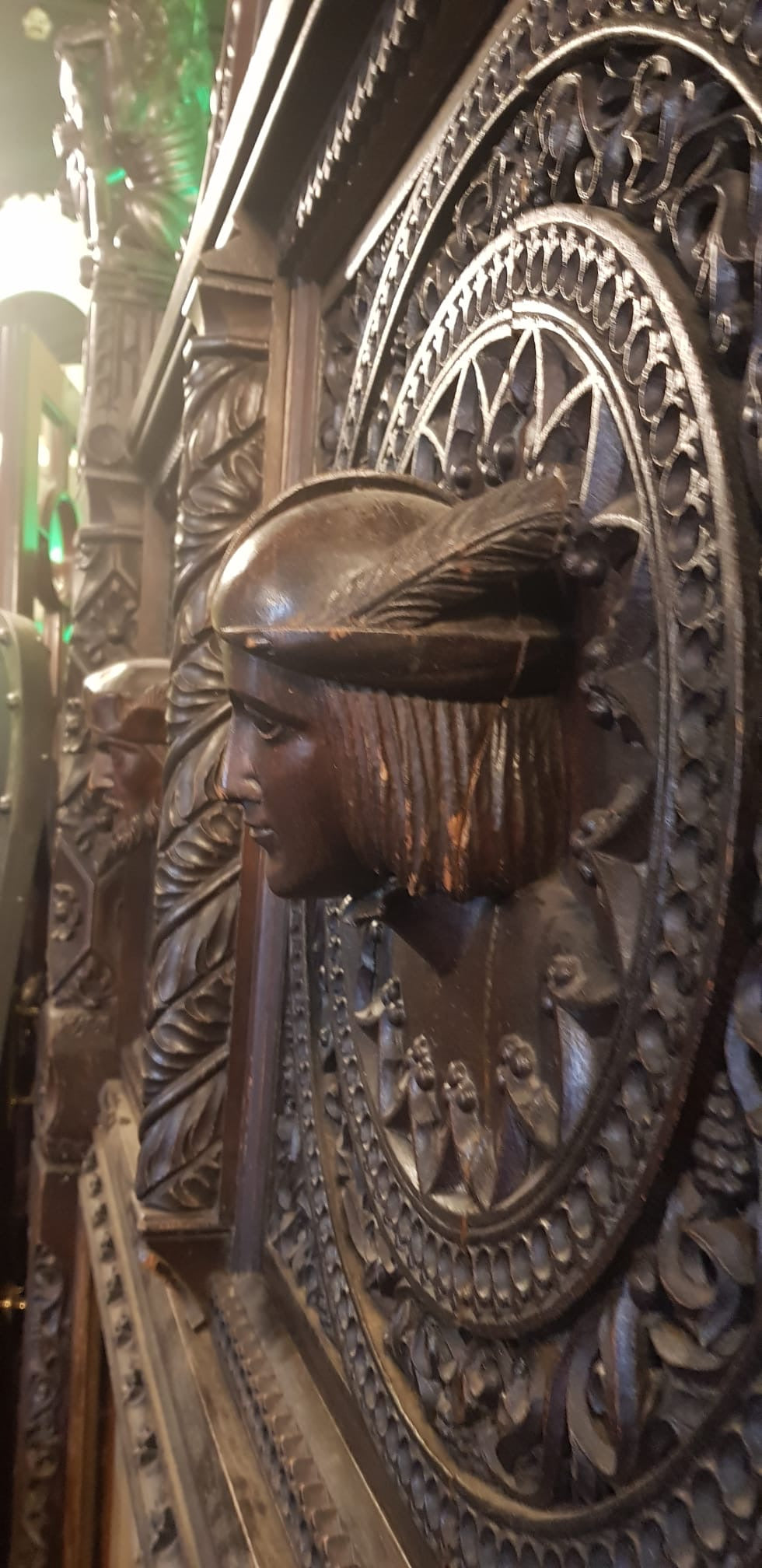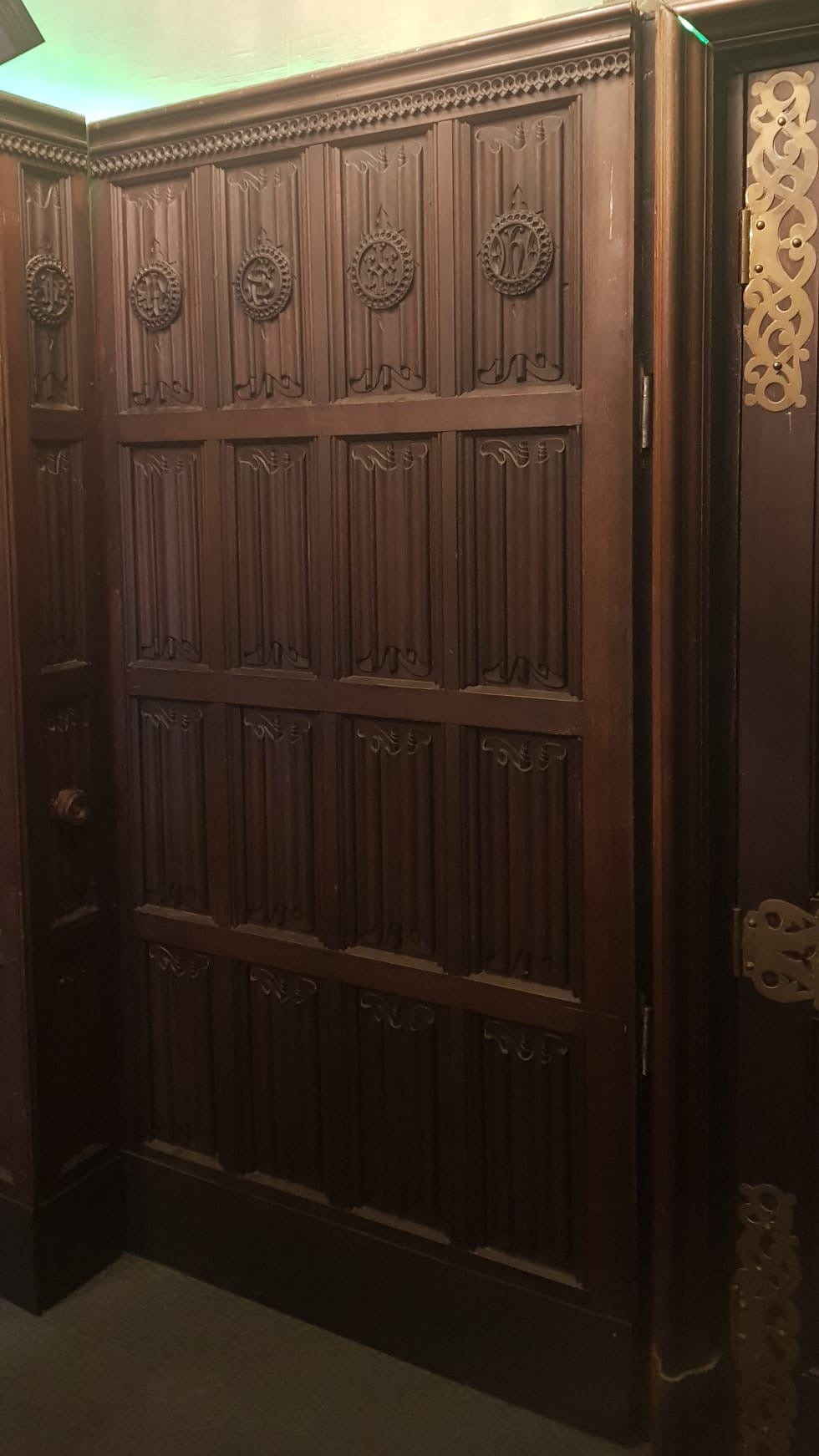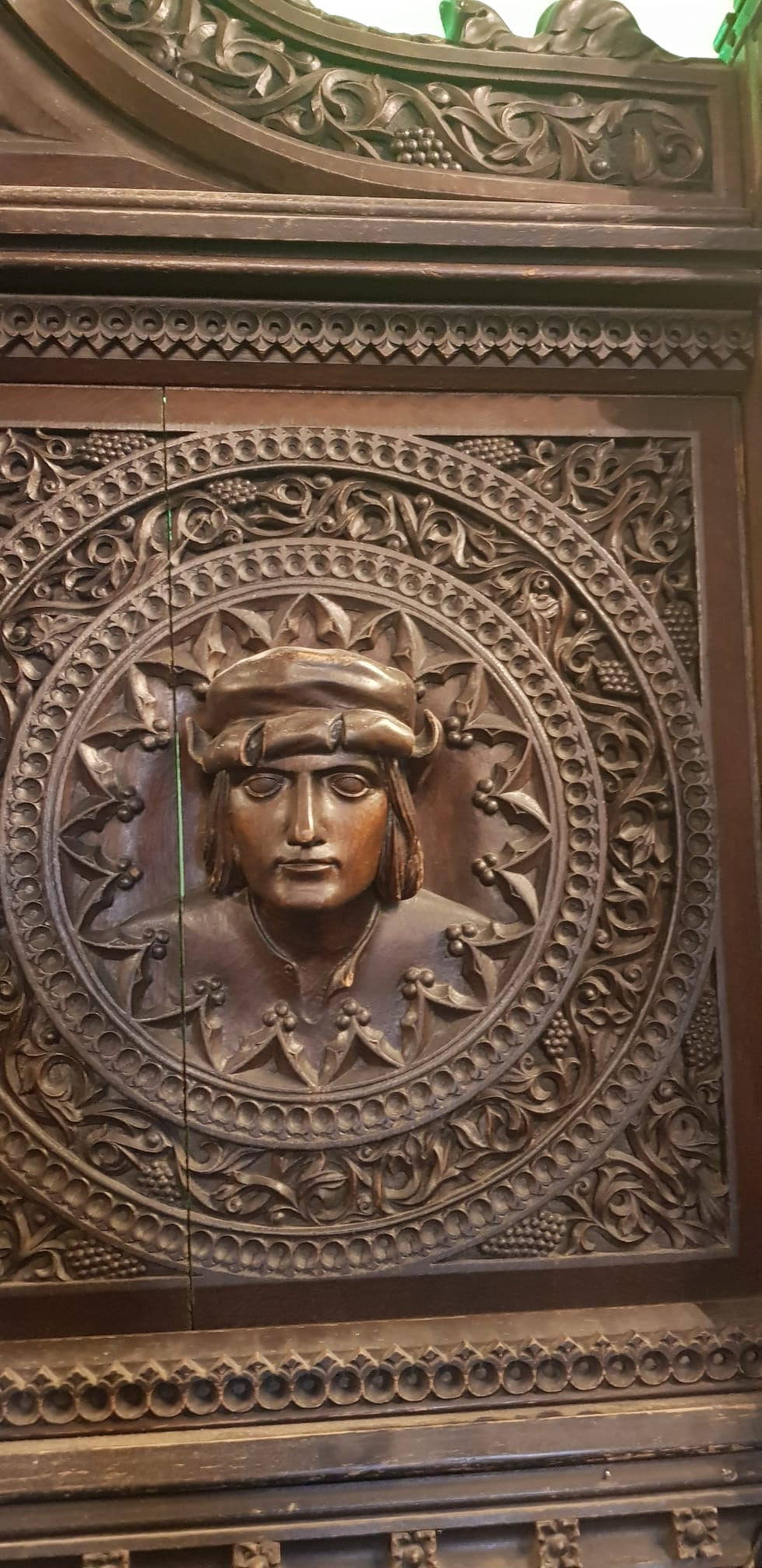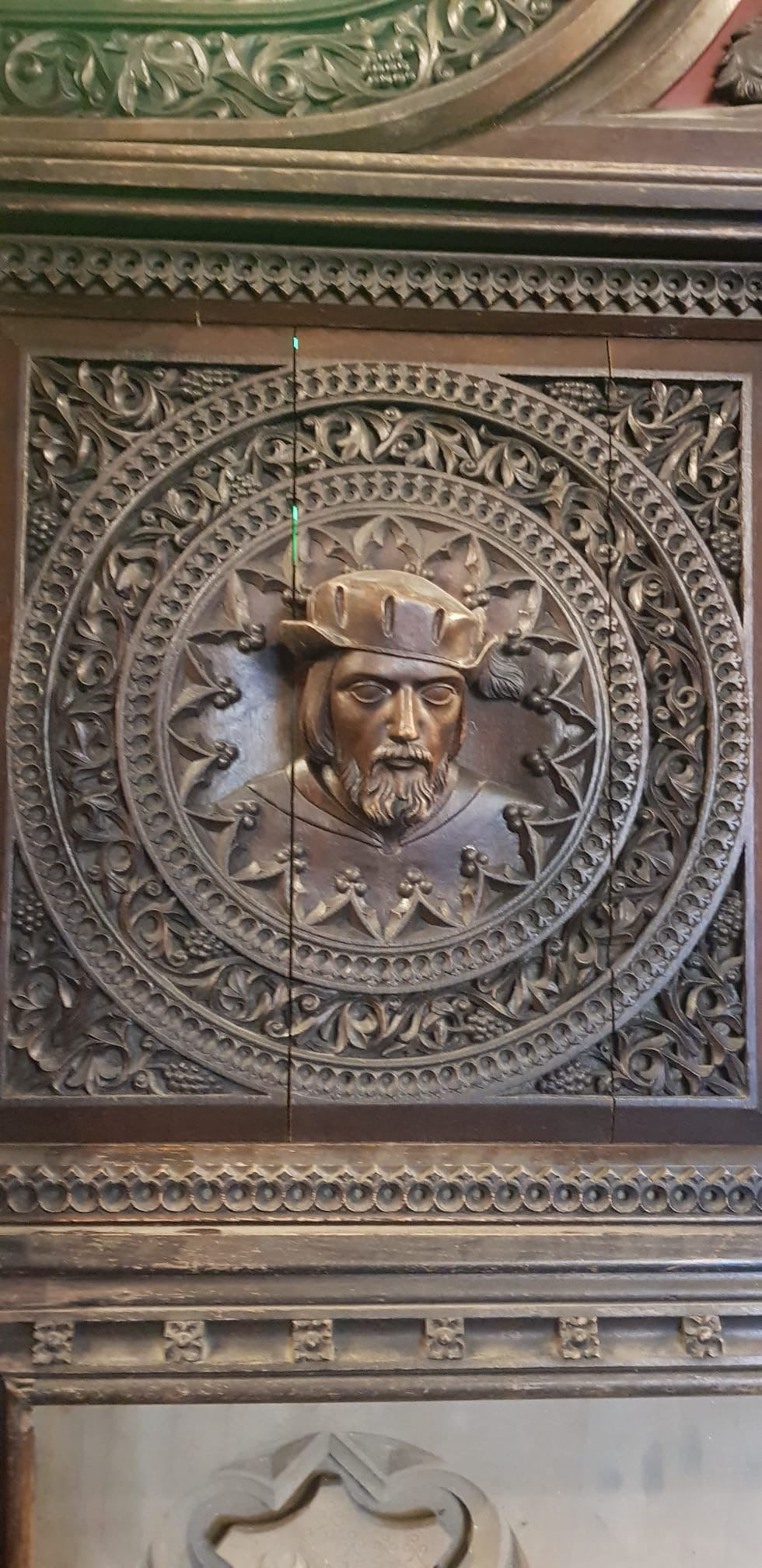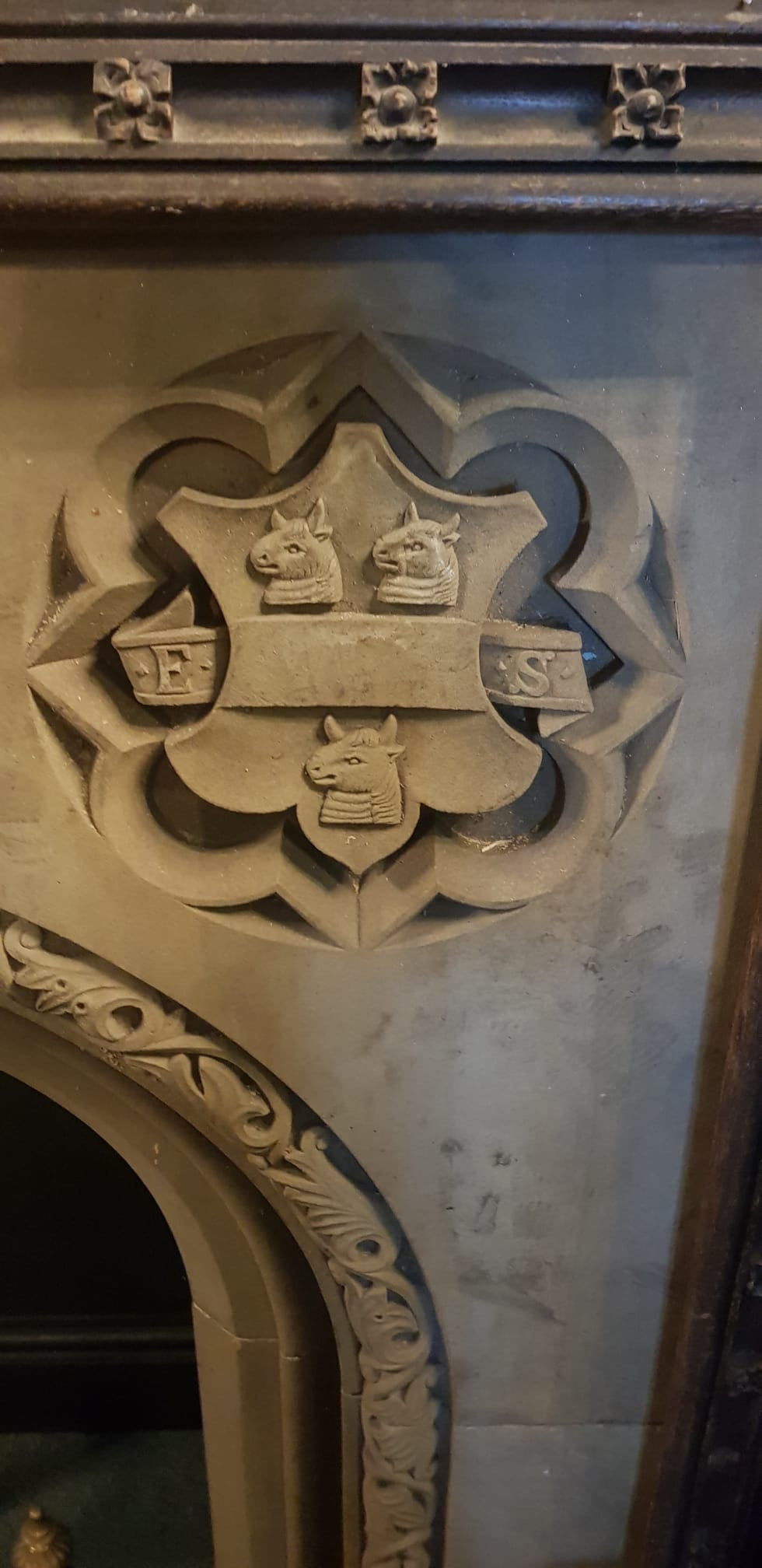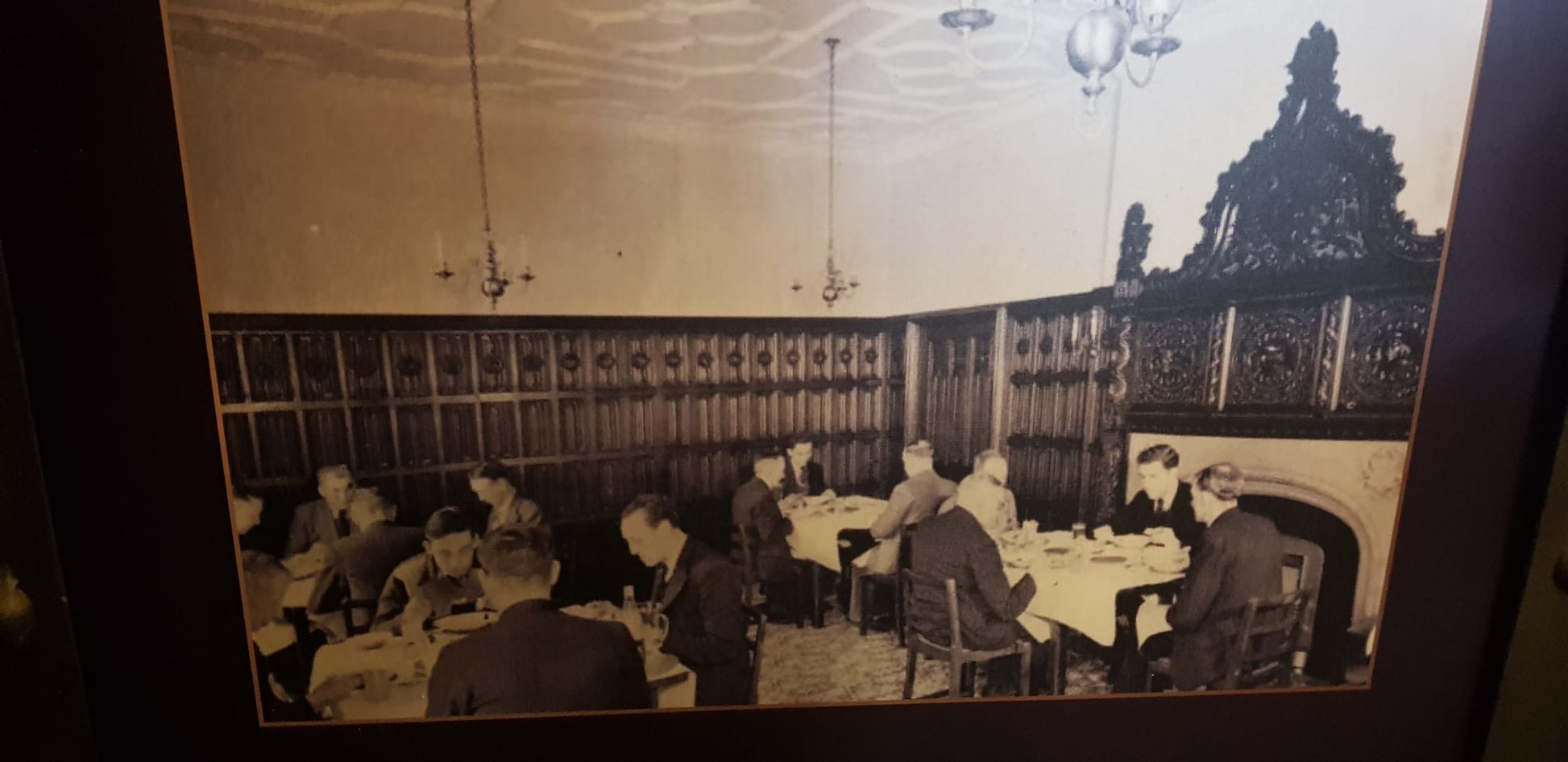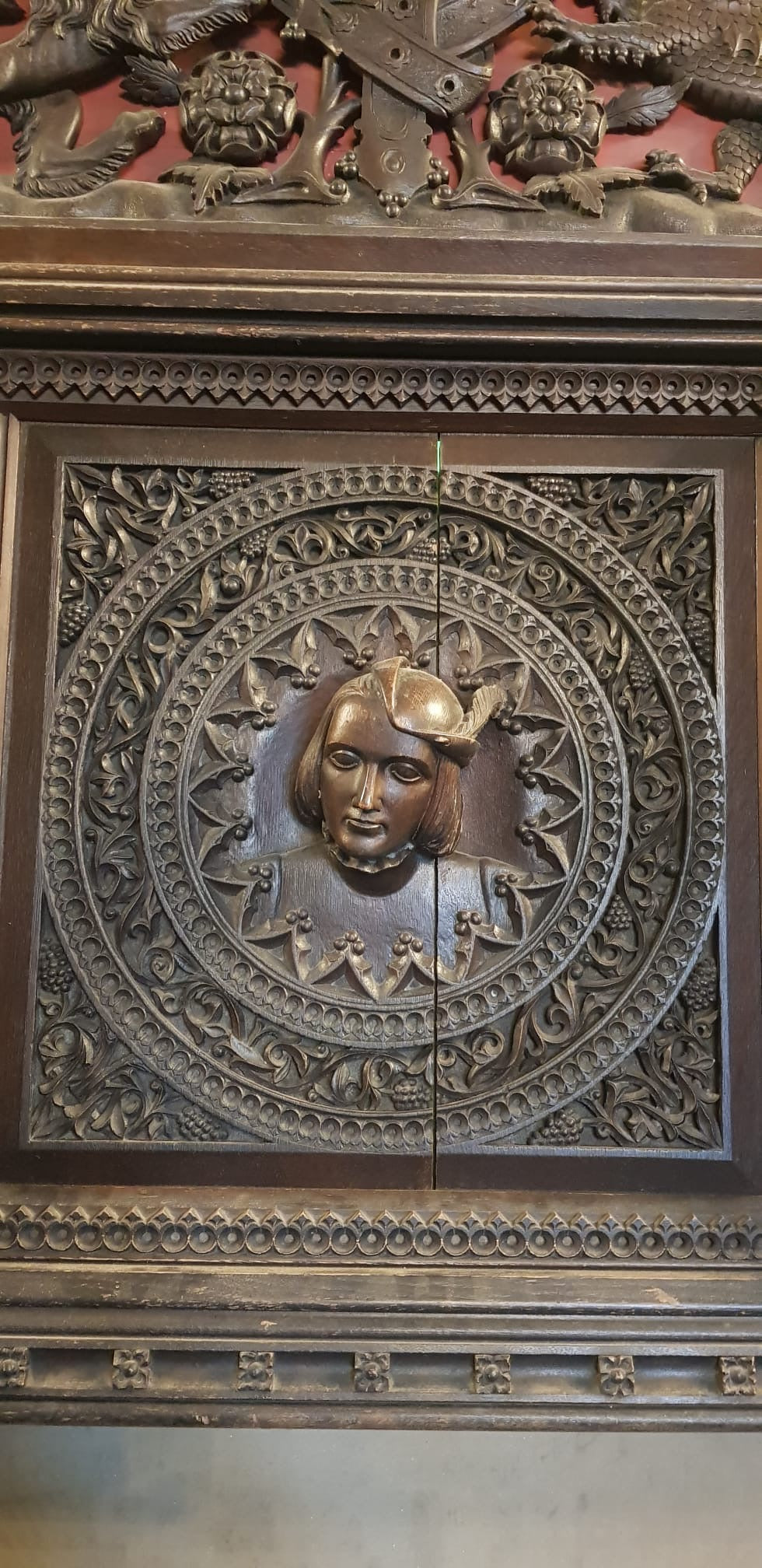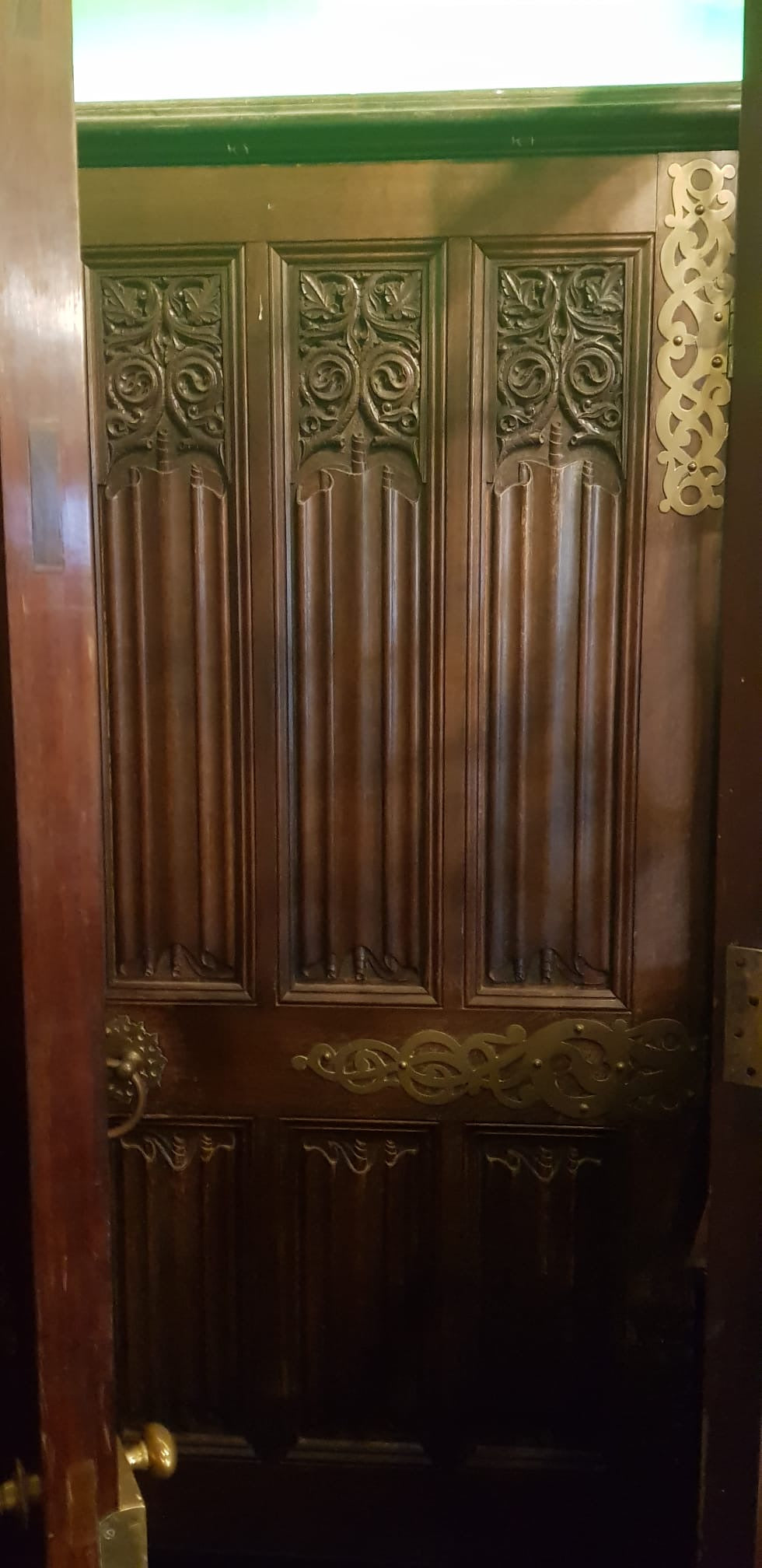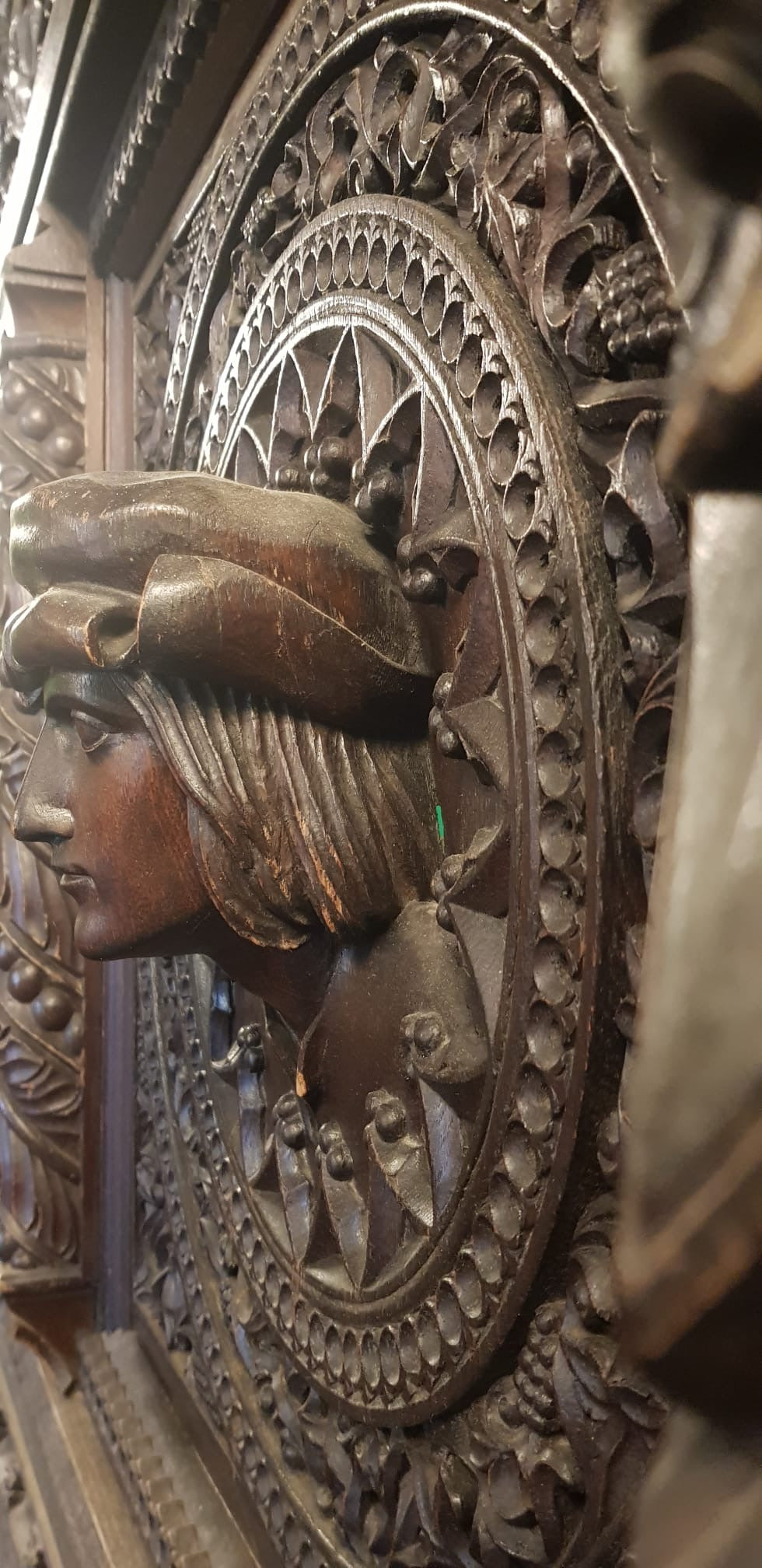Timeless Reflections
Highly Carved Antique Gothic English Oak Linenfold Panelled Room from Hampsfield House (circa 1880–82)
Highly Carved Antique Gothic English Oak Linenfold Panelled Room from Hampsfield House (circa 1880–82)
Couldn't load pickup availability
This exceptional, intricately carved antique Gothic oak room is a rare find, removed from the historic **Hampsfield House**, located between Lindale and Grange-Over-Sands in the picturesque Southern Lake District. Constructed between 1880 and 1882, Hampsfield House was built for the distinguished **Sir John Tomlinson Hibbert KCB**, a key figure in British politics during the Victorian era.
**Room Dimensions and Structure:**
- **Room Size:** 8 metres (315 inches) by 5.5 metres (216 inches).
- **Panelling Height:** 2.2 metres (87 inches).
- **Fire Surround Dimensions:** 2.7 metres (106 inches) wide by 3.4 metres (134 inches) high.
The room features magnificent **linenfold panelling**, a style originating in the 14th century that mimics folded linen, symbolising wealth and prestige. The oak wood, renowned for its strength and durability, was expertly carved in the Gothic style, showcasing ornate detailing and craftsmanship synonymous with the Victorian era.
**Provenance & Historical Significance:**
Sir John Hibbert, who commissioned this room, was an influential statesman who served as **Financial Secretary in Gladstone’s Cabinet** (1884–85, 1892–94), **Under-Secretary to the Home Office**, and **Secretary to the Admiralty**. Knighted in 1893, Sir John was an esteemed public servant, also playing a role as chairman of the **Lancashire County Council** and serving on various **Royal Commissions**. His ancestral home, **Urmston Grange**, built during the same period as the English Royal Coat of Arms (1405–1603), reflects his deep ties to the aristocracy and the history of England.
This oak-panelled room, removed from Hampsfield House, is an embodiment of Sir John’s legacy and is imbued with the grandeur and elegance of Victorian England. The carvings on the panelled walls were crafted during his time, with the oak panelling encapsulating the power and heritage of the Hibbert family.
**Royal Symbolism and Heraldic Details:**
At the room’s pinnacle is a finely carved **English Royal Crown**, adorned with **four crosses patee** alternating with **fleurs-de-lys**, and surmounted by another cross patee. This design, traditionally worn by the **King of England** and his heir, is a symbol of regal authority and nobility.
The centrepiece of the room’s heraldry is the **English Royal Coat of Arms** (1405–1603), which harks back to the era of Sir John’s ancestors and the construction of Urmston Grange. The arms feature **three passant lions**, representing the English royal family, and **fleurs-de-lys**, symbolising the French royal family, a reminder of the historical ties between England and France during the medieval period.
Surrounding the shield is the **Order of the Garter**—England’s most prestigious order of knighthood, founded by **Edward III in 1348**. The shield is inscribed with the motto “**Honi Soit Qui Mal Y Pense**” (Shame on him who thinks evil of it), a phrase immortalised when Edward III tied a garter around his leg after the Countess of Salisbury’s fell off, rebuking those who mocked her.
This stunning piece of heraldry is flanked by two majestic animals—a **lion rampant** and a **dragon rampant**—both powerful symbols of English royalty and strength.
**Decorative Tudor Carvings:**
The intricate carvings also feature **Tudor roses**, symbolising the union of the **Houses of York** and **Lancaster**, following the end of the **War of the Roses** in 1487. The roses are meticulously carved into the oak panelling, a tribute to the **Tudor dynasty**, which marked one of England’s most prosperous and culturally rich periods, lasting from 1485 to 1603.
The **red and white roses** are delicately intertwined throughout the room’s panelling, symbolising peace, unity, and the strength of the English monarchy. The juxtaposition of these historic symbols, along with the heraldry and ornate Gothic elements, highlights the profound artistry and historical significance of this unique piece.
**Hampsfield House and Sir John Hibbert’s Legacy:**
Sir John Hibbert (1824–1908) was born at **Lyon House, Oldham**, and was a prominent politician, businessman, and public servant. His father, Elijah Hibbert, co-founded the successful firm **Hibbert, Platt & Sons**, machinists based in Oldham. Educated at **Shrewsbury School** and **St. John’s College, Cambridge**, Sir John went on to have a long and distinguished career in public service, holding office in **four of Gladstone’s administrations**. His contributions to national and local government were vast, influencing legislation such as the **Married Women’s Property Act** and **Municipal Elections Act**, and he was instrumental in the governance of **Lancashire County Council**.
Upon his death in **1908**, Sir John was buried at Lindale-in-Cartmel, near his beloved Hampsfield House. His legacy continues to be honoured, with portraits of him housed at **Oldham Art Gallery**, **Lancashire County Offices**, and the **Royal Albert Asylum** in Lancaster.
**An Opportunity to Own a Piece of English History:**
This highly carved antique oak panelled room is not just a testament to the Victorian era’s craftsmanship, but also a tangible link to one of England’s most storied political figures and his ancestral heritage. The room’s historic elements—its heraldic shields, Gothic carvings, Tudor roses, and regal motifs—make it a remarkable piece of architectural history.
Owning this room means possessing a unique artefact that not only stands as a beautiful example of Victorian craftsmanship but also tells the story of **Sir John Hibbert**, his family’s legacy, and the rich history of **Hampsfield House**. Whether for a grand restoration project or as a centrepiece in a stately home, this room is truly a piece of history waiting to be cherished by its next custodian.
Share
